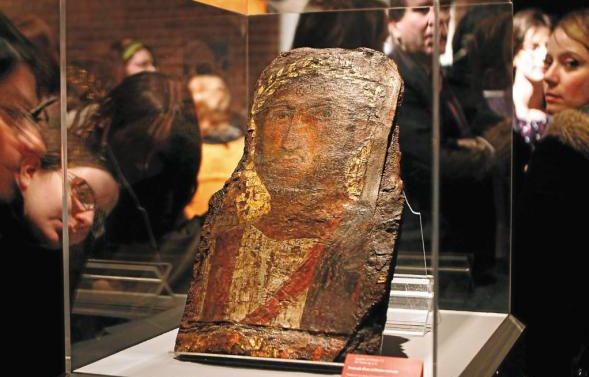In mid-February 2012, the Palais des Beaux-Arts in Lille presented to the public a sumptuous ancient Egyptian piece acquired a year earlier at an auction. It was an encaustic painting on wood representing a “portrait of a Roman soldier”, also called “portrait of Fayoum”, dated between 125 and 135 AD. Eleven years later, the museum came to learn that he had perhaps been fooled into spending his savings to buy a fake. Explanations.
There are boxes of “portraits of Fayoum”. But not like the one exhibited prominently for eleven years in the department of Egyptian antiquities at the Palace of Fine Arts. “For years we have wanted to acquire this work which is the mother of all portraits of classical painting,” Alain Tapié, director of the Lille museum, declared at the time. So, when the museum got wind that its precious object was in the catalog of an auction by Pierre Bergé et Associés, in May 2011, the institution was finally able to get its hands on it thanks to a pre-emption from the State . The price, 80,000 euros, almost 100,000 including costs.
Traceability of the work until the 1920s
At that time, there was nothing to suggest that the work could be a fake. Traceability goes back to the 1920s and 1930s, when the “Portrait of Fayoum” became part of a British collection (Blanchard, Cairo), before leaving, in 1983, for the United States and finally arriving, in 2011, at this famous auction in Paris. In the meantime, 20 minutes managed to find traces of this antiquity in a London gallery, which exhibited the “Portrait of Fayoum” in 2008, during the Basel Ancient Art Fair, in Basel, Switzerland. The work was also offered for sale at the price of 185,000 euros but we do not know if it found a buyer during this event.
Before the auction by Pierre Bergé and associates, in 2011, the “Portrait of Fayoum” had been appraised by a recognized specialist: Christophe Kunicki. We find his trace as an antiques expert or auctioneer on numerous art auctions. Until 2020, he was considered the best specialist in Mediterranean archeology before being indicted with her husband as part of a vast investigation into trafficking in antiquities looted from countries in the Near and Middle East. Since then, all the expertise he has been able to carry out has been called into question, in particular that of the “Portrait of Fayoum” at the Lille museum.
The Palais des Beaux-Arts was thus informed by the Office for Combating Trafficking in Cultural Property (OCBC) “that strong suspicions weighed on the authenticity” of its precious antiquity declared, this Wednesday, the town hall of Lille . The work was therefore seized by investigators from the judicial police and must be analyzed “by a research and restoration laboratory”. If the “Portrait of Fayoum” is ultimately a fake, the city has warned that it will be added to the long list of complainants against the fallen expert.

